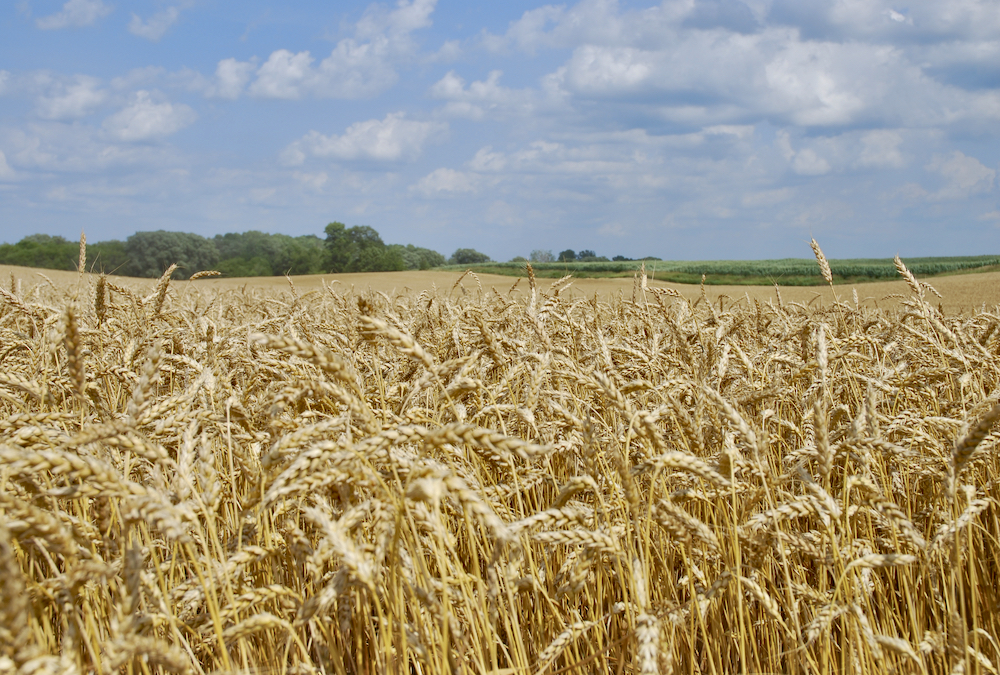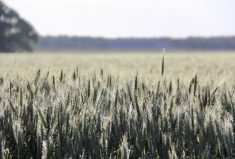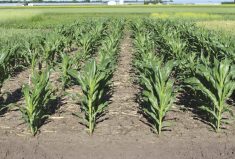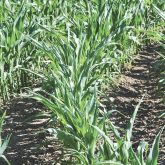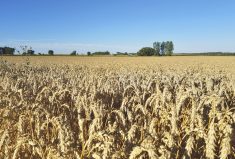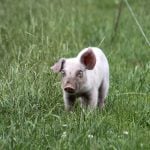Wheat growers always want to boost yields and cut costs, but this year’s combination of high prices and high input costs has called for an even sharper pencil. That’s led to heightened management in managing cereals — and winter wheat, in particular — with greater intensity than in the past. The success of the Great Lakes Yield Enhancement Network (YEN) project and continued discussions on higher rates of nitrogen-based fertilizers have fuelled a new level of interest in managing for higher yields and improved quality.
Heightened management in wheat means higher seeding and fertilizer rates, but with lush growth and higher kernel weights come an increased lodging risk. The registration of a plant growth regulator (PGR) from Syngenta lowers that risk, limiting stem elongation in the plant’s development. In 2021, Moddus (trinexapac-ethyl), a gibberellic acid inhibitor, was registered across Canada for use in winter wheat, spring wheat (including durum), barley and oats. Optimum timing is from growth stage 30 to 32, although company data reported a benefit when applied later as well.
“We know there’s still good value at growth stage 37,” says Marijke Vanderlaan, agronomic service representative for Syngenta Canada. “Once you get to full flag leaf emergence, a lot of that elongation is done. The best value is if you get it done before growth stage 37 and the ‘best-best’ value is in that 30 to 32 window.”
Read Also

Producers aren’t panicking over tariffs and trade threats
The influence of tariff and trade uncertainity on farm business decisions.
Vanderlaan says the greater intensity of wheat management is the primary driver for interest in a PGR. She notes more growers in Ontario are applying 120 lbs. of N per acre or more and planting as close as possible to their optimal date. It’s why those who used Moddus in 2021 likely saw good value in a growing season marked by heavier lodging.
When to decide?
Is your field a candidate for a PGR? The answer is multilayered: did you plant close to the optimal planting date, at optimal seeding rate, or go higher than you should have, only to find germination rates were higher than expected? How many stems per square foot do you have in the spring?
“Planting date and nitrogen availability are two of the primary drivers,” Vanderlaan says. “You should have at least 65 stems per square foot in the spring and then consider your total nitrogen being released from your fertilizer, manure and organic matter sources. If growers are pushing their wheat and going for 140 to 150 lbs. of N per acre, then it’s a good idea to plan for Moddus.”
Vanderlaan believes growers are more “dialed-in” to using a plant growth regulator even though some still refer to wheat as “poverty grass” and fail to pay as much attention to specifics. But that’s changing.
“All of us are paying much more attention to how wheat grows and what it looks like at growth stage 30 versus what it looks like at growth stage 37,” says Vanderlaan. “We’re all learning more about the crop and the nuances between varieties — which has been a lot of fun.”
Growers are working with agronomists and monitoring planting dates, seeding rates, and whether the variety is susceptible to lodging. Some may apply Moddus because they’ve seen a yield benefit regardless of lodging. In 2021, roughly half of Vanderlaan’s trials had lodging and half didn’t. In those without lodging, there were cases of a four- or five-bushel benefit. Work with Moddus in other countries showed an impact on root development, including finer root hairs and a larger root system, which can help with in-season stress.
“We did a trial with C&M Seeds with a few different varieties, different seeding rates, different nitrogen rates, and with and without Moddus, and saw a four-bushel-per-acre yield benefit,” says Vanderlaan. “On top of that, they saw the lodging prevention benefit. Overall last year, where it was applied in that optimal window up to growth stage 37, we saw a 4.7-bushel advantage.”
That’s within the range of what they’ve seen in other plots and other regions. There is also a benefit to applications on barley and oats, which can be susceptible to lodging.

Growers’ experiences
Simplicity is often key to adoption of newer products or management practices, and for Dan Martin, adding Moddus to his wheat fields had few complications.
“It was very simple and we changed our program a little this year, but for the better, in my opinion,” says Martin, a grower from West Montrose, Ont. He has a corn-soybean-wheat rotation and has used a PGR for four years.
“We had better fungicide timing, we’re using less fuel at harvest, we’re faster during harvest and it’s a huge factor with narrow windows, with rain and grain quality issues. And we had better moisture and quality straw.”
Martin heard about plant growth regulators from wheat agronomist Phil Needham, and used Manipulator before Moddus was registered. He’s now convinced his wheat production system is better with it included.
“This product is a must in high-management wheat crops,” he adds. “I use it at the lower rate and it works great with a variety that doesn’t lodge as easily.”
For Matt Beischlag, there were three advantages he wanted to see in using a PGR. The first was to shorten the plant for insurance against lodging.
“The next one was to push our nitrogen rates and our up-front fertility program on our wheat — without it lodging,” says Beischlag, who farms near Hagersville, Ont., with a corn-wheat-soybean rotation. “Finally, I wanted to see if there’s a yield advantage to using a PGR by itself by shortening the straw and putting more of the plant’s nutrients into the kernels. And overall compared to untreated checks, we’ve seen a four-bushel increase just on using Moddus.”
Five or six years ago, Beischlag heard of growers in New Zealand using PGRs and wanted to learn more about their benefits. He tried Manipulator when it was registered; however, the timing and growing conditions in 2019 prevented him from getting much usable data to confirm its value.
What Beischlag likes about Moddus is its relatively wide window for application, which also provides more tank-mix options.
“I wouldn’t want to push that limit to growth stage 39 but I do want to see that flag leaf out and flipped over at growth stage 35 to 37 or even 34 to 37,” he says. “Then we’ll throw a fungicide in the tank as well.”
Multitasking
Vanderlaan fields a lot of growers’ questions about tank mixing, although she says many in the industry tend to shy away from discussing it because there can be specific conditions where it’s not recommended. But she maintains that under good growing conditions with temperatures above 5 C at night with the wheat crop actively growing and water volumes of 20 gallons per acre, a three-way mix of a PGR, a fungicide and a herbicide is manageable.
“But it’s important to talk to a local agronomist or representative about specific tank mixes,” she says. “Consider the weather primarily and that you’re using a good water volume when applying those products. When it comes to tank-mix compatibility, any multi-tank mixes have passed a mix-and-go test in our lab, as long as a grower follows the proper WALES mixing order.


